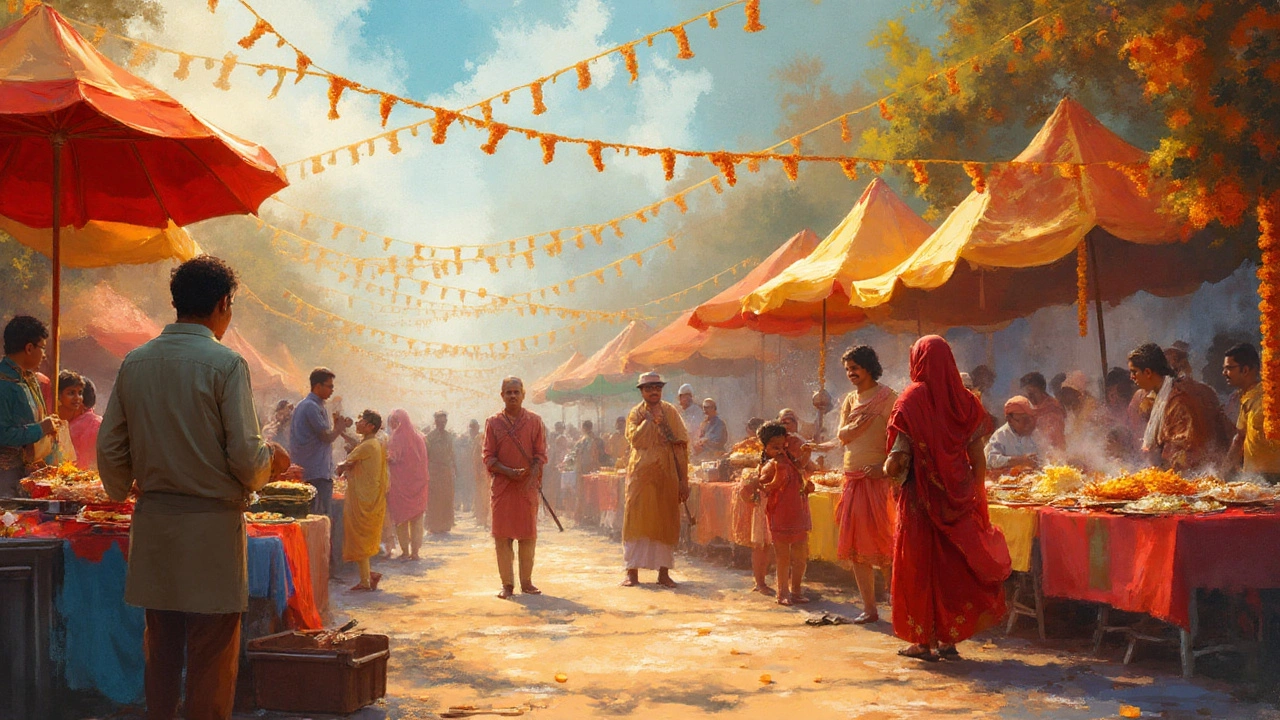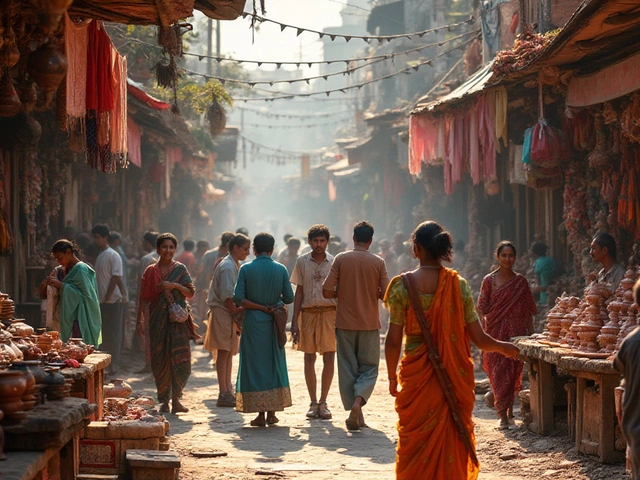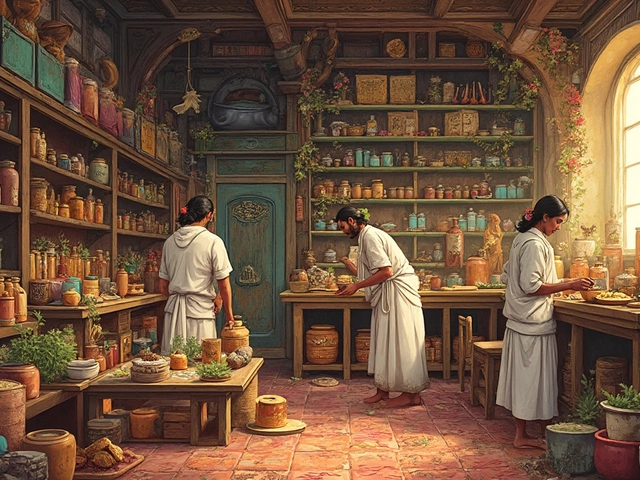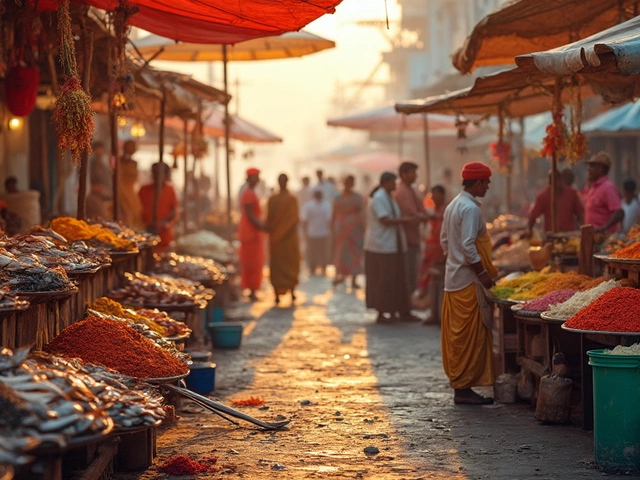Ever noticed how food tastes a little better outdoors, with music playing and everyone buzzing around you in search of the next bite? That’s the magic of a traditional food festival. People aren’t just passing around plates—they’re sharing generations of stories, ancient recipes, and contagious excitement around each table. The moment you step into a festival like this, it’s never just about the food. There’s laughter, the familiar scent of something frying, kids darting between stalls holding fruit drinks, and old-timers reminiscing about “how Grandma used to make it.” These events are lively tapestries stitched together from local flavor and a fierce sense of pride. From the bustling streets of Istanbul’s Baklava Festival to the slow, smoky sizzle of an American barbecue showdown, traditional food festivals are far more than gourmet showrooms—they’re doors into the cultures they celebrate and the communities that keep them alive.
What Defines a Traditional Food Festival?
Walk into almost any culture’s heartlands and you’ll find some kind of traditional food festival. But what exactly sets a food festival apart as “traditional?” There are three main ingredients: heritage, authenticity, and local pride. It’s not just a market with food stalls. At its core, a traditional food festival is rooted in the culinary identity of a community. The dishes usually have some historical or regional significance—think Neapolitan pizza, Japanese ramen, or Mexican mole. These events often pop up at special times of year tied to harvests, religious celebrations, or other meaningful moments. For example, Oktoberfest in Munich revolves around centuries-old brewing traditions, while Pongal in South India celebrates a fresh rice harvest with sweet, creamy rice dishes.
Another thing you’ll notice: recipes get passed down here like family heirlooms. A stew you taste at a Portuguese festa might not come from any cookbooks. It’s a recipe quietly guarded, perhaps only known by Aunt Maria, who adds a secret handful of local herbs. These festivals are living museums of taste, and you get to be part curator, part adventurer. Usually, locals organize them, drawing from their own food heritage and techniques that haven’t changed much in generations. Modern twists do sneak in from time to time, but the backbone is always tradition.
This isn’t just fun and feasting. Traditional food festivals provide serious value to their communities. They support small farmers, offer regional products a stage, and add an essential spark to local tourism economies. Ever tried a Basque pintxo in San Sebastián or drank kvas at a Slavic harvest gathering? The foods are unique, but the connection—celebration, nostalgia, and communal identity—remains the same everywhere. So, if you’re trying to pin down the definition: a traditional food festival is a showcase of heritage recipes, honest flavors, and the pure joy of eating together, seasoned with a pinch of history and local pride.
Roots and Evolution: A Bite of History
People have been gathering to share food since they started growing and hunting it. The concept of the food festival stretches back to the earliest agrarian societies. Egyptians held great feasts around the river Nile harvests. Greeks and Romans had grand banquets marking wine or olive season. These events weren’t just feasts—they made up the social glue that kept villages together. Fast forward centuries, and you’ve got events like the Italian Sagra, the French Fête de la Gastronomie, and the Indian Onam Sadya all keeping those ancient rituals alive, in a slightly shinier package.
What’s interesting is how these festivals evolve based on geography, climate, and available crops. No two food festivals are exactly alike. In Japan, cherry blossom season brings people together for hanami picnics, where bento boxes show off bright, in-season flavors. In the Andes, villagers roast “pachamanca” on hot stones, maybe as they’ve done for over 3,000 years. The American Thanksgiving meal actually began as an early settler harvest festival, though it’s mutated into something way more commercial. All these traditions shift over time, absorbing new influences as trade routes open, and borders change. The spices that ended up in Hungarian goulash or Indonesian rendang often came with traders, colonists, or conquerors.
But even as the dishes themselves evolve, what never goes out of style is the ritual of eating together in celebration. There’s a psychological kick to this, too. Sharing meals helps cement friendships, honor ancestors, and mark big milestones—from weddings to planting seasons. According to UNESCO, some food festivals even made the global list of Intangible Cultural Heritage—like the Mediterranean diet feasts in Greece, Italy, Spain, and Morocco. It’s a fair bet that humans will keep creating these food festivals as long as there’s something to harvest, a story to tell, and folks nearby to appreciate a good meal.
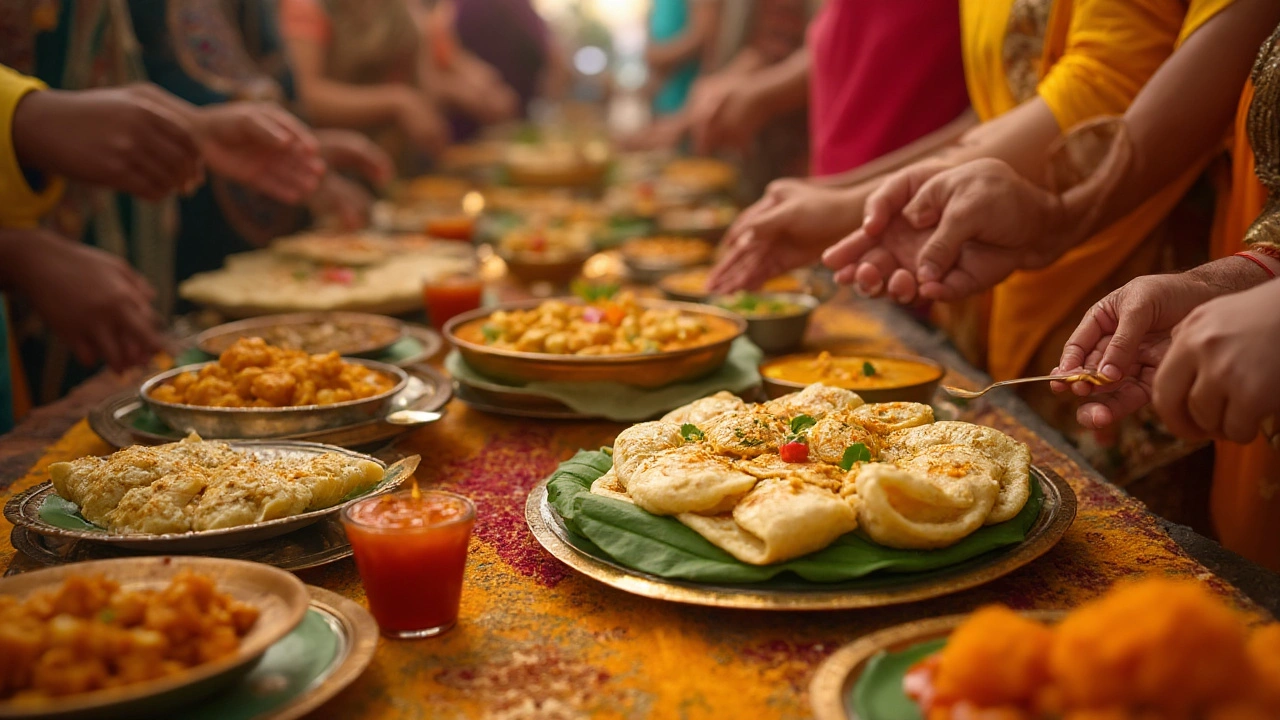
Experiences and Traditions You’ll Find
If you’re thinking all food festivals are basically the same, think again. Each festival puts its spin not just on the food, but the experience. At La Tomatina in Spain, you might get doused in ripe tomatoes—yes, it’s technically a food festival-slash-food fight. At the Gilroy Garlic Festival in California (before it paused in 2020), folks tried garlic ice cream, garlic wine, and watched the world’s fastest garlic chopper in action. Over in India, the Hornbill Festival of Nagaland showcases dozens of distinctive Naga tribal dishes, right alongside dances, games, and war cry contests.
One thing that stands out at these festivals is the atmosphere: colorful decorations, people wearing traditional outfits, and hands-on activities for all ages. Tables groan under platters of food, while grandmas show off pickling skills or how to shape dumplings at stalls. Want to try cooking yourself? Many food festivals offer live demos or workshops, so you can knead, stir, and taste with your own hands. Some even host hot pepper eating contests, recipe contests, or Guinness World Record attempts for the longest loaf of bread. There’s something primal yet deeply comforting about being surrounded by the noise, the smells, and the comforting presence of hundreds of others all united by one thing: good food.
It’s not all about taste, either. At lots of traditional food festivals, music, dance, theater, and local crafts combine into a full sensory experience. Mexico’s Day of the Dead feasts feature family altars loaded with bread and sugar skulls, plus lively marimba bands and storytelling. In Morocco, the Imilchil Engagement Festival ties food with fortune-telling and matchmaking traditions. If you’re a food lover, make it your mission to experience not just what’s on the plate, but everything orbiting around it: customs, ceremonies, scent, sound, and the very real sense of history you can almost taste.
Interesting Facts, Figures and Festival Highlights
You’d be surprised how influential food festivals are. For instance, Oktoberfest in Munich—probably the world’s largest traditional food festival—attracts about 6 million visitors every year, consuming around 7 million liters of beer and half a million grilled chickens. Over at Thailand’s Vegetarian Festival, whole towns switch to plant-based eating and some devotees perform eye-popping rituals as a sign of devotion. And in Italy, Alba’s annual White Truffle Fair sees a single truffle auctioned off for more than $100,000 (no, that’s not a typo).
Here’s a quick look at traditional food festival numbers you might find interesting:
| Festival | Country | Annual Attendance | Signature Dish | Notable Feature |
|---|---|---|---|---|
| Oktoberfest | Germany | 6,000,000+ | Pretzel & Beer | World’s Largest Beer Fest |
| Olney Pancake Race | UK | 5,000 | Pancakes | Watch locals sprint with pans |
| Yanshui Beehive Fireworks Food Fair | Taiwan | 50,000+ | Steamed Buns | Wildest Firework Show |
| La Tomatina | Spain | 22,000 | Tomato Soup | Epic Tomato Fight |
| Gilroy Garlic Festival | USA | 80,000+ | Garlic Ice Cream | Unusual Garlic Dishes |
Food festivals drive big business for local economies. The National Restaurant Association reports that attendees at U.S. food festivals spend an average of $64 per day, with 40% of festival-goers traveling from outside the host city. That means more hotel bookings, more souvenirs, and a big boost for local food producers and craftspeople. This isn’t just a temporary boost—it helps smaller regions show off what makes them unique, pulling in repeat tourism and keeping old recipes out of the forgotten corners of family kitchens.
Some festivals are so renowned that they spark copycats around the globe. For example, Bastille Day’s food markets have inspired countless “French food fairs” in cities from New York to Sydney, and Kerala’s Onam Sadya feasts pop up in Indian restaurants worldwide every August and September. These events encourage culinary experimentation, too: you’ll often spot unexpected mashups like sushi burritos, kebab tacos, and vegan renditions of classic lamb dishes, letting traditional food live on in fresh and surprising ways.
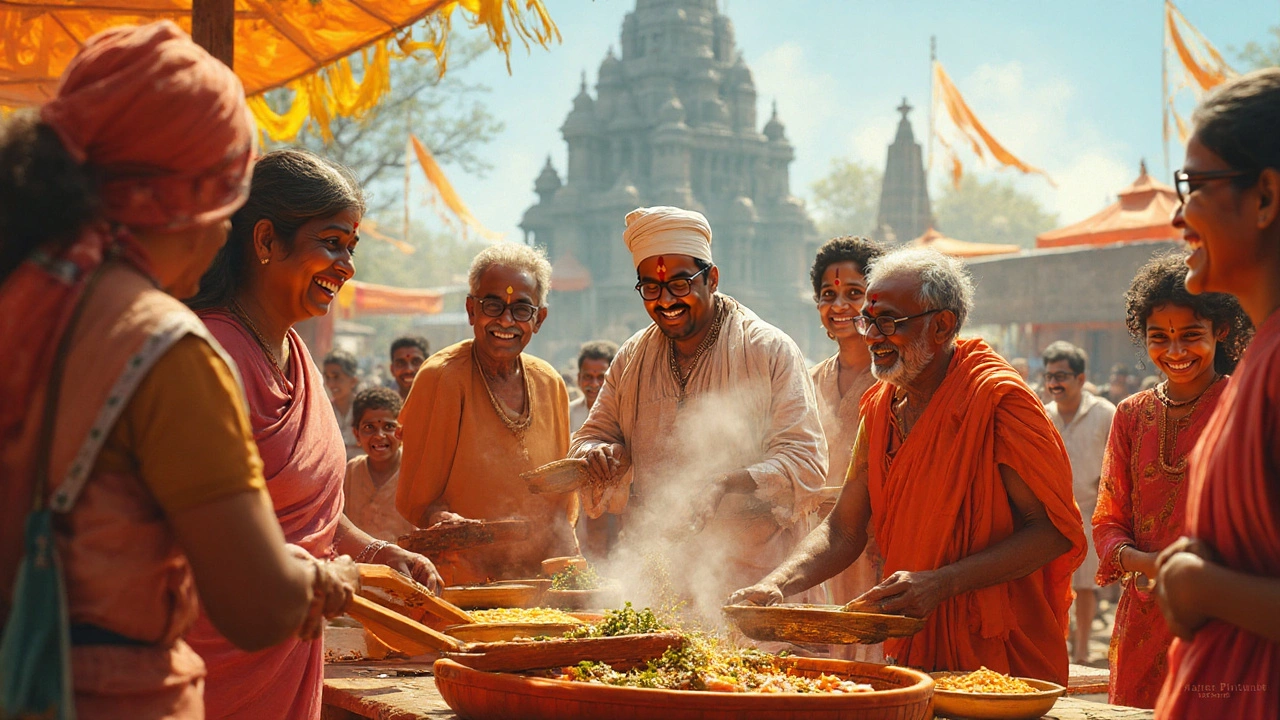
How to Get the Most Out of a Traditional Food Festival
There’s an art to enjoying a traditional food festival, and it starts well before you ever get your hands greasy. Do some research before you go—know which signature dishes are must-tries, and check if there’s a cooking demo or contest you want to catch. Bring cash; small vendors may not accept cards. Stash a bottle of water and maybe some antacid (trust me: you’ll thank yourself after your fourth stop at the biryani counter).
Arrive early to dodge long lines at the most popular stalls. Locals often flock to one or two ‘legendary’ vendors—if you see a crowd, join it. They likely know what’s good. Ask questions; many cooks love explaining the origins of their food, passing on fun facts or family trivia you won’t get anywhere else. Don’t be shy about sharing tables or joining group seating. These events are about community as much as cuisine, and swapping stories with strangers is half the fun.
- Pace yourself. Festival portions can add up—space out tasters and save room for something sweet at the end.
- Check schedules. Parades, music, cook-offs, and workshops aren’t to be missed.
- If you have dietary restrictions, research before you go. Many festivals now offer vegan, gluten-free, or allergy-aware options, but not always clearly marked.
- Bring a reusable plate or cup. It’ll save on waste, and some events even reward eco-friendly diners with discounts or prizes.
- Capture memories. Take photos, but don’t forget to jot down recipes, or grab leaflets—these can be gold mines for future kitchen adventures.
- Befriend the vendors. Ask for stories, recommendations, or even off-menu tastings—you’d be amazed what opens up when you show genuine interest.
If you make it a habit to hit traditional food festivals on your travels (or even just in your hometown), you’ll get a taste of what makes every culture unique. You learn not just with your mouth, but with your senses—and, sometimes, your heart. Grab a plate and dig in; you’re feasting on stories, connection, and the best of what people have to share.
